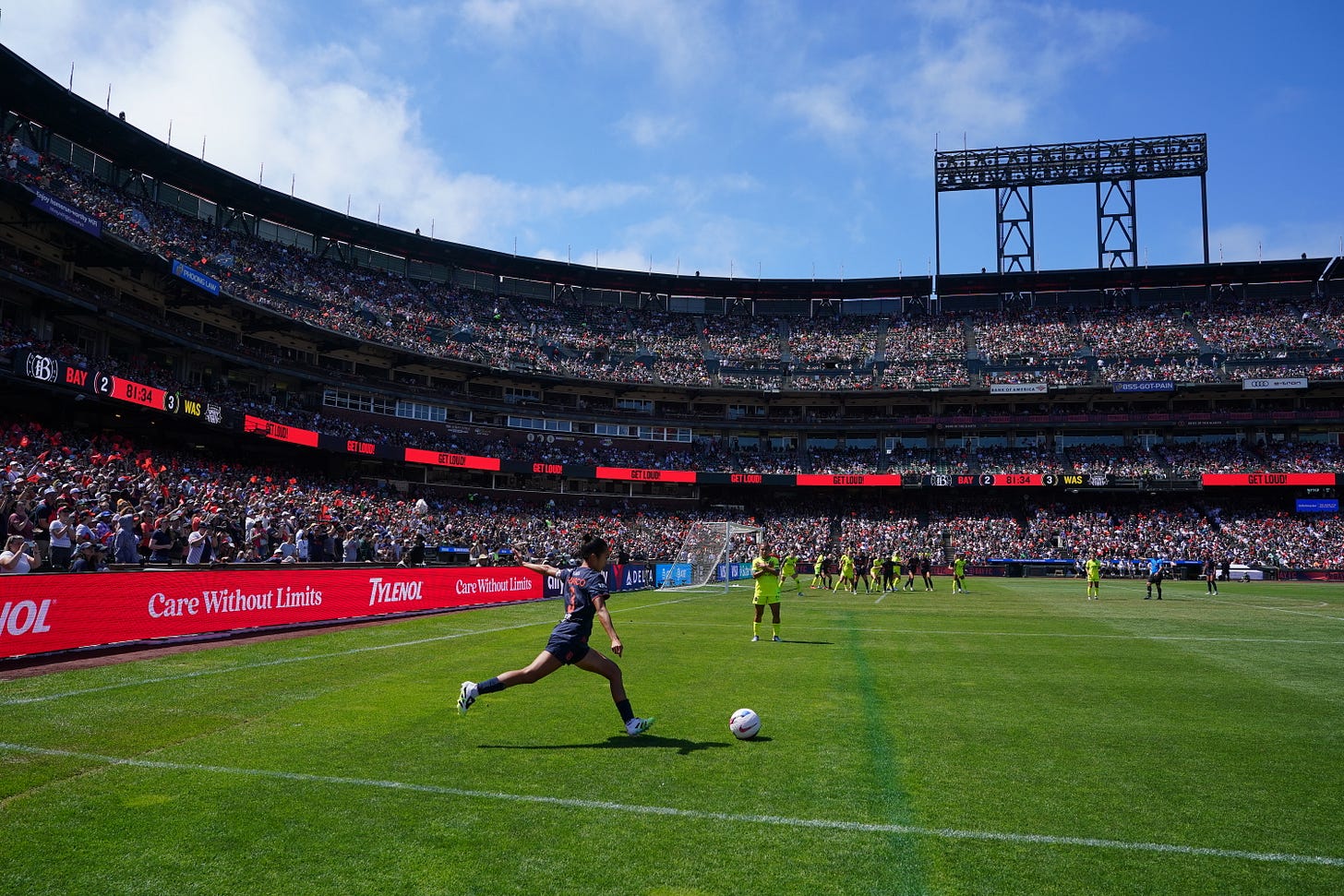Beyond the records, what trends are we seeing in NWSL attendances?
After smashing attendance records, how can the NWSL reach a different audience of football fans?
Another NWSL season, another record-breaking attendance.
Last weekend, the NWSL smashed its own league single-match attendance record for the fourth consecutive season.
On a bright and crisp afternoon in Northern California, 40,091 crammed into Oracle Park, hom…
Keep reading with a 7-day free trial
Subscribe to The Cutback to keep reading this post and get 7 days of free access to the full post archives.



